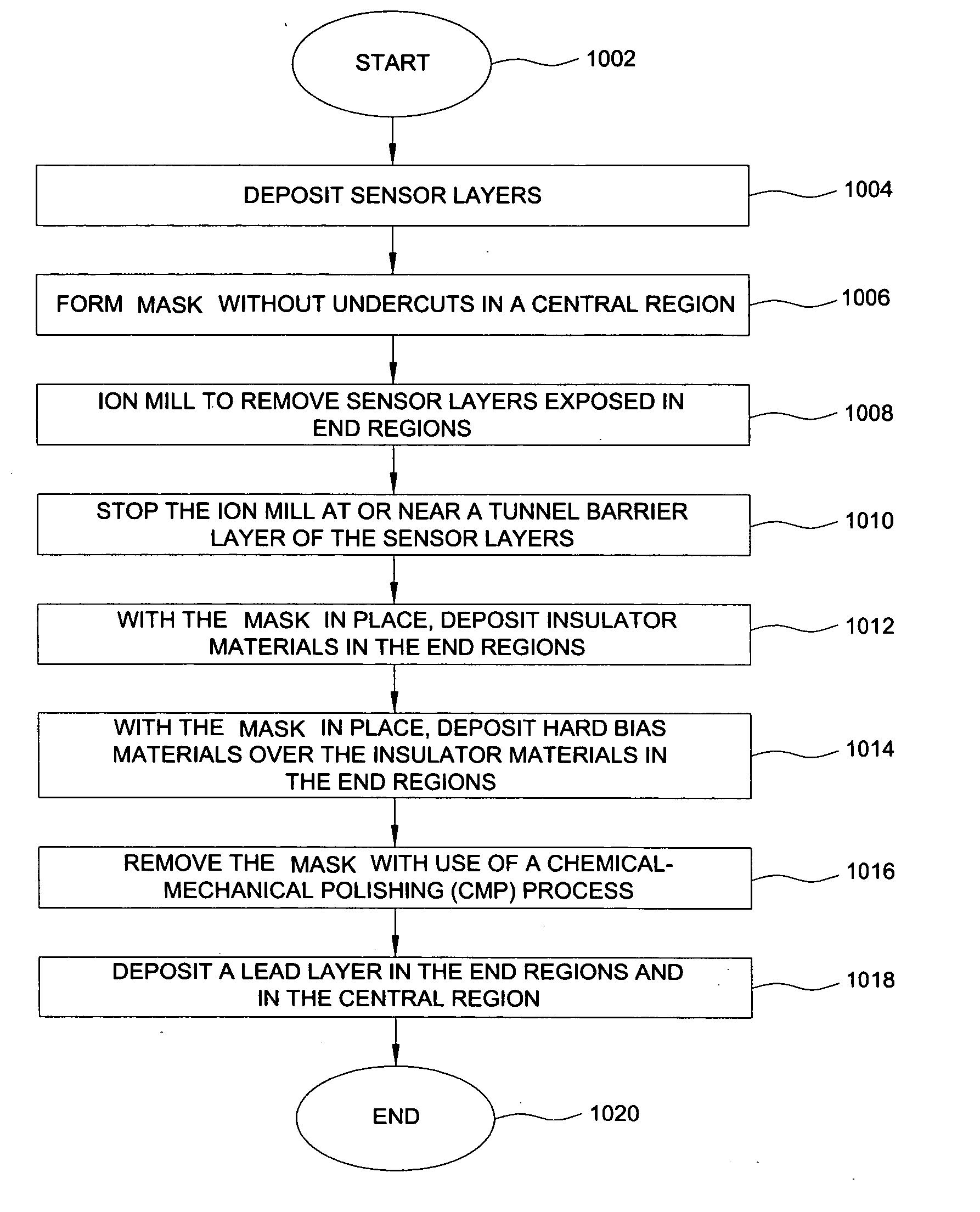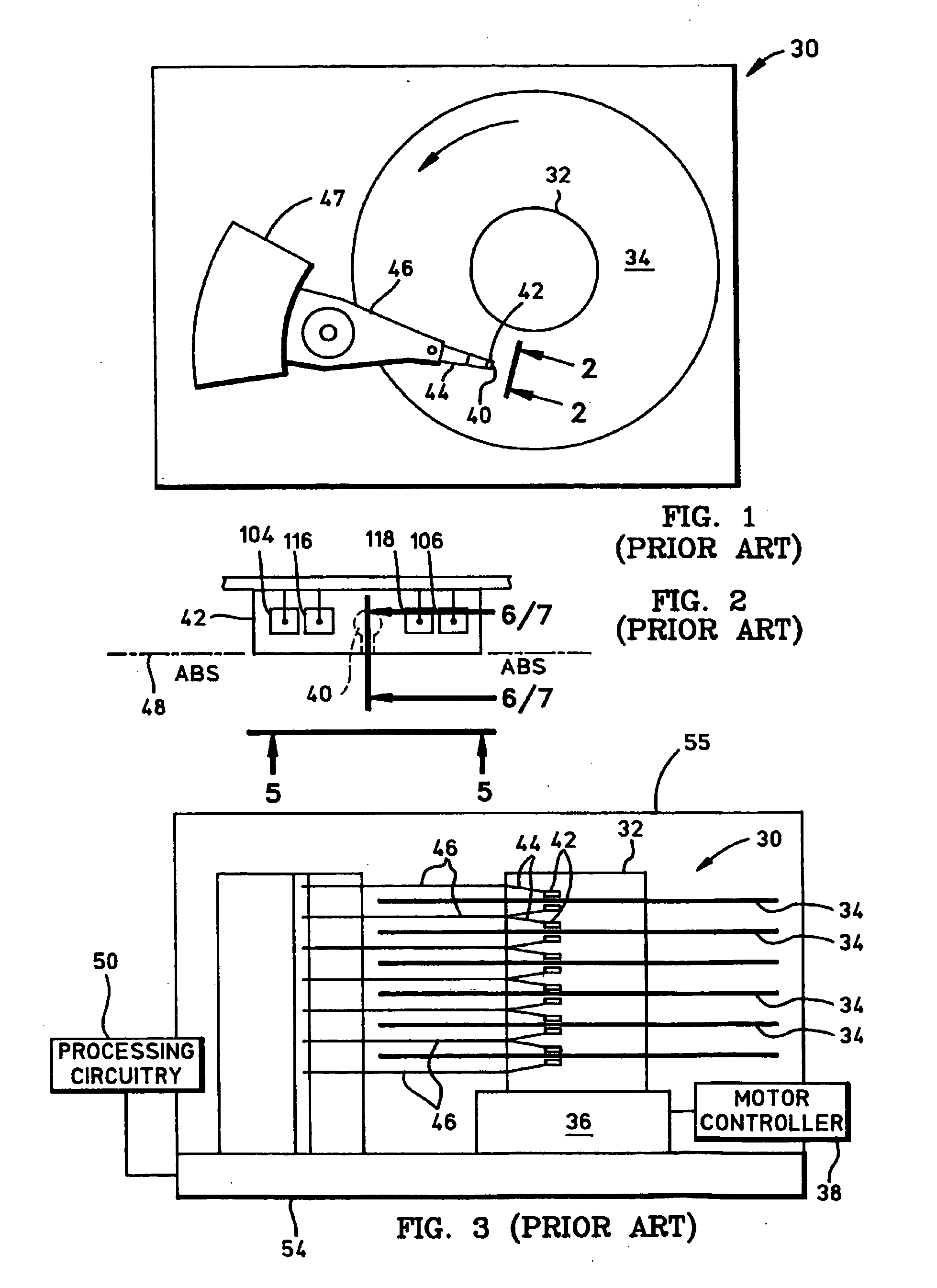Methods of making a current-perpendicular-to-the-planes (CPP) type sensor by ion milling to the spacer layer using a mask without undercuts
a technology of current perpendicular to the plane and ion milling, which is applied in the direction of manufacturing head surfaces, instruments, manufacturing tools, etc., can solve the problems of re-deposition of electrically conducting materials, re-circuited pinned ferromagnetic layer and free ferromagnetic layer, and conventional masks used during ion milling that do not provide a well-defined track width (tw), so as to improve cpp type sensor performance performance and improv
- Summary
- Abstract
- Description
- Claims
- Application Information
AI Technical Summary
Benefits of technology
Problems solved by technology
Method used
Image
Examples
Embodiment Construction
[0030] Methods for use in forming current-perpendicular-to-the-planes (CPP) type sensors, including CPP giant magnetoresistance (GMR) type and CPP magnetic tunnel junction (MTJ) type sensors are disclosed. In one particular example, a plurality of CPP type sensor layers are formed over a wafer and a mask without undercuts is formed over the plurality of CPP type sensor layers in a central region. With the mask without undercuts in place, an ion milling process is started to remove CPP type sensor layer materials left exposed by the mask without undercuts in end regions which surround the central region. The ion milling process is stopped at or near a spacer layer of the CPP type sensor layers. Insulator materials are then deposited in the end regions where the CPP type sensor layer materials were removed, followed by hard bias materials over the insulator materials. The mask without undercuts is then removed through use of a chemical-mechanical polishing (CMP) assisted lift-off proc...
PUM
| Property | Measurement | Unit |
|---|---|---|
| nonmagnetic | aaaaa | aaaaa |
| CPP giant magnetoresistive | aaaaa | aaaaa |
| electrically conductive | aaaaa | aaaaa |
Abstract
Description
Claims
Application Information
 Login to View More
Login to View More - R&D
- Intellectual Property
- Life Sciences
- Materials
- Tech Scout
- Unparalleled Data Quality
- Higher Quality Content
- 60% Fewer Hallucinations
Browse by: Latest US Patents, China's latest patents, Technical Efficacy Thesaurus, Application Domain, Technology Topic, Popular Technical Reports.
© 2025 PatSnap. All rights reserved.Legal|Privacy policy|Modern Slavery Act Transparency Statement|Sitemap|About US| Contact US: help@patsnap.com



